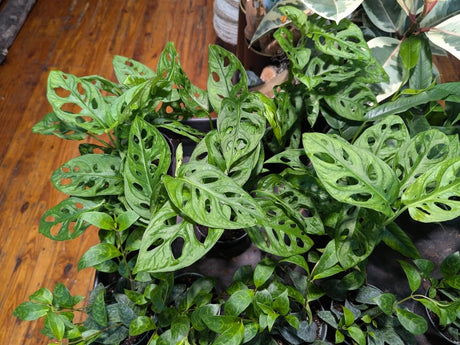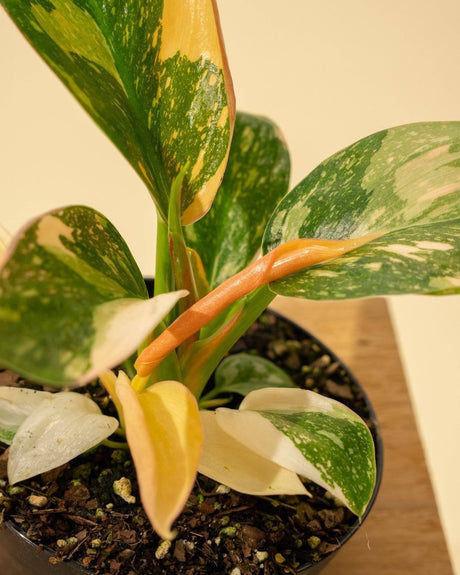Philodendrons: The Perfect Low-Maintenance Houseplant
Philodendrons are one of the easiest and most attractive indoor plants to grow. These tropical beauties effortlessly add lush greenery to any space, requiring minimal care to thrive. Their versatility, combined with their vibrant foliage, makes them a favorite among plant enthusiasts.
Why We Love Philodendrons
- Versatile Decor: Whether placed on a shelf, in a hanging basket, or as a statement floor plant, Philodendrons bring life and texture to any room.
- Low Maintenance: With just a few basic care steps, these plants remain healthy and vibrant year-round.
- Air-Purifying Qualities: Philodendrons improve indoor air quality, making them both beautiful and functional.
- Impressive Growth: Depending on the species, they can grow up to six feet tall or trail elegantly in a hanging display.

Types of Philodendrons
Philodendrons come in two main types, each with its unique growth habit and appeal:
1. Vining Philodendrons
These varieties are perfect for adding a cascading or climbing element to your indoor garden. They have aerial roots and require support to grow upward, such as a trellis or hanging basket.
- Examples: Heartleaf Philodendron, Swiss Cheese Plant (Monstera adansonii).
- Best Use: Hanging baskets, wall-mounted trellises, or climbing poles.

2. Non-Vining Philodendrons
These upright varieties grow compactly and are excellent for container planting. They have thick, bushy foliage and are known for their fast-growing nature.
- Examples: Philodendron Birkin, Philodendron Prince of Orange.
- Best Use: Statement pieces for tabletops, corners, or as part of a mixed container arrangement.
Explore Non-Vining Philodendrons

When to Plant Philodendrons
Spring is the ideal time to plant Philodendrons, as their growth peaks during warmer months. However, these hardy houseplants can be started at any time of year, making them a flexible choice for indoor gardening.
How to Care for Your Philodendron
Light Requirements:
Place your Philodendron near a window where it receives bright, indirect light. While they tolerate lower light conditions, too much light can cause the leaves to yellow. Ensure they are not exposed to direct sunlight.
Soil:
Philodendrons thrive in loose, well-draining soil. Choose a pot with a drainage hole to prevent waterlogging. Refresh the soil annually to keep your plant healthy.
Watering:
- Keep the soil evenly moist, allowing the top inch to dry out between waterings.
- Water every 1–2 weeks, adjusting based on the season and humidity.
- Avoid overwatering or underwatering, as both can cause yellow leaves.
Temperature and Humidity:
- Ideal temperatures: 60–80°F.
- Humidity: These plants enjoy higher humidity. Mist their leaves occasionally or use a humidifier to prevent dryness. Keep them away from direct air conditioning vents.
Fertilizer:
Feed your Philodendron monthly with a balanced fertilizer to ensure it gets essential nutrients like calcium and magnesium. Fertilize less during the winter when growth slows.
Shop Plant Fertilizers at Ed’s Plant Shop
Pruning and Propagation:
- Pruning: Remove dead or yellowing leaves to encourage new growth and maintain the plant’s shape. Regular pruning keeps the plant healthy and vibrant.
- Propagation: Snip a healthy stem about six inches long, ensuring it includes a few leaf nodes. Place the cutting in water or soil to grow a new plant.
Learn How to Propagate Your Philodendron
Why Philodendrons Are Perfect for Everyone
With their fast growth and low maintenance requirements, Philodendrons are a joy to care for and suitable for beginners and experts alike. Their adaptability, air-purifying qualities, and ability to thrive with minimal attention make them a must-have for any indoor garden.
Ready to add one to your collection?
Browse our stunning selection of Philodendron plants and find the perfect match for your home or office today!

















